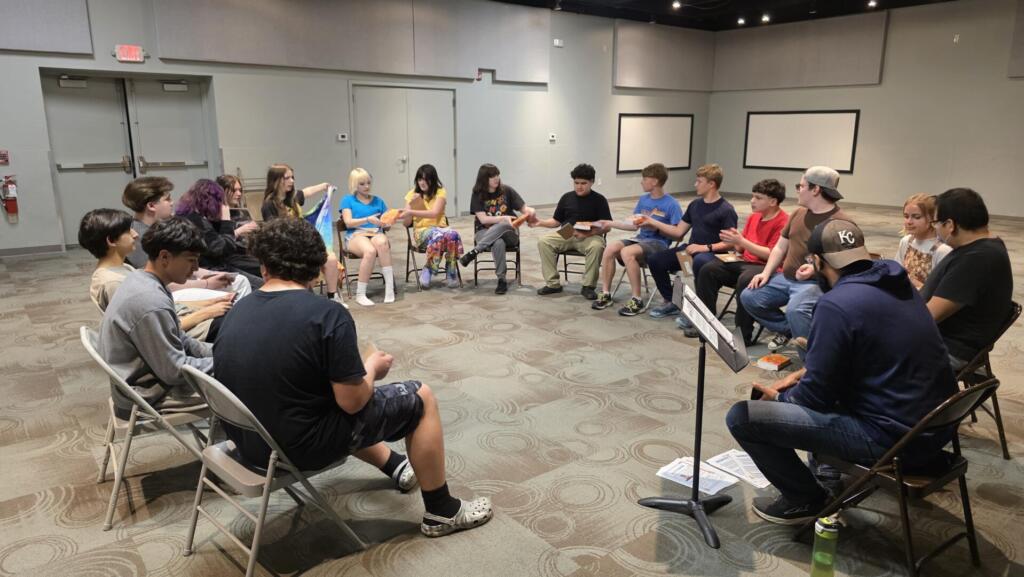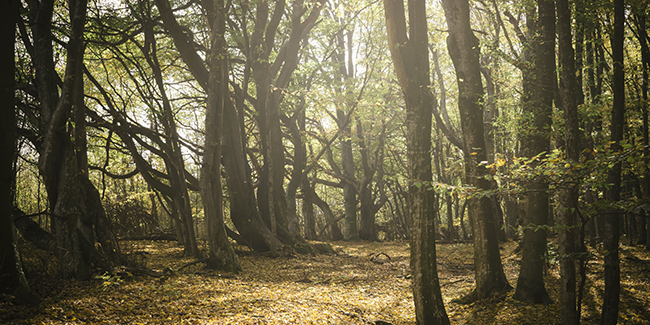By Kurt Rietema
The leaves barely blushed with fall color. A canal dating back to the time when Aaron Burr haunted these New Jersey woods had a footpath that lured me out of the hotel room that morning. From the satellite imagery, it was unclear whether the trail continued through the woods or ended near the bland safety of an office park sidewalk. If it ran out, no matter. I’d happily exchange a run to clamber through the beeches and oaks.
The trail most definitely ran out. My first attempt dead-ended into cattails and a marsh. The second led into the woods. But it was not a familiar, Midwest kind of woods. This was a heavily fortified one, guarded by regiments of ground roses and brambles. Thorny vines bloodied my bare legs like spooled razorwire. Like some determined Redcoat 250 years before me, I stubbornly pressed on, refusing to admit defeat in a new land. I finally arrived at the canal only to realize that the footpath I’d ventured to find was on the opposite bank. Mercifully, a few hundred yards down, a tree had fallen across the breadth of the canal. I had to slog through the same mud and stagnant waters I’d earlier avoided, but finally, with skin scored and tattered like a battle-worn flag, I’d arrived at the footpath. It was a pleasant enough run. The sun began warming the day, rounding off the hard edges of the crisp air. But a grey cloud followed me all along the towpath, taunting me as I remembered I had to make a return.
There was an alternative. Instead of the brambles, I could take the towpath until it went dark under the New Jersey Turnpike. Before long, I was pressed against the margins of one of the most notorious freeways in the Lower 48 with rush hour traffic over my left shoulder. Desperate for an exit, I scrambled down the embankment in an attempt to get back to the office park sidewalk only to be met by a fence with no obvious way to scale. By the third attempt, I’d cleared the fence after adding a few more scrapes to my collection. But I’d avoided the worst, fearing my life would end impaled on a chainlink fence like a rebel on a bayonet with New York City traffic barrelling by. I should have stuck to the trail.
In our work with young people, we’ll often get glimpses of the guidance that they receive from the adults in their lives regarding faith and spirituality. Some kids get the kind of, “Stick to the office park sidewalks, or better yet–don’t even leave the safety of the hotel room” messages about God. The world is dangerous. Don’t screw up. God is watching you. Stick to the path–or face consequences. The appeal of that kind of religion is understandable for parents from poor and working-class families. They know how bad decisions can wreak havoc not only on their children’s futures, but ruin for everyone around them. They’ve witnessed what happens when drugs and alcohol get a grip on someone. Or what follows when a kid falls in with the wrong crowd and is swept up in the wake of gang violence. A god who mirrors their black-and-white view of the world helps them keep their kids in line.
Then there’s another group of kids whose parents grew up under that same vengeful, fear-based religion and decided they wouldn’t hold their kids as spiritual hostages like they once were. Instead of safe sidewalks, they tell their kids, “Make your own trail.” Choose your own path. I’m not going to tell you what to do or what you should believe or who you should love. Figure it out for yourself. It’s your life. That attitude, too, is understandable. As they grew up, they witnessed the scandals, they saw through hypocrisy, through the affairs, they skipped a Sunday and lightning didn’t strike them dead. Where at first, that laissez faire approach to faith might feel like freedom for a young person, after enough attempts at bushwacking their way through a spiritual wilderness, shins bloodied from brambles, and hitting dead ends with nothing and no one to guide them, they can feel abandoned as spiritual orphans.

The vast majority of the kids in our youth group fit into one of these two groups. Very few go to church. Fewer still have anything more than a cursory knowledge about the Bible. And until being a part of the Good Life, most of them held negative or cartoonish images about God. Last month over spring break, we had our first Argentine youth group retreat at camp. It was a chance to go deeper into the theme of prayer we’d been exploring on Wednesday nights all semester. It went… fine. The kids engaged—then drifted. Some leaned in, some didn’t. We weren’t sure if anything stuck.
Then, a few days later, we got a glimpse of what had actually been stirring. Joe texted me, “Here’s two conclusions that students in the same household reached. *Sam: ‘I am pagan, and you won’t convert me, I like learning about Christianity but I don’t feel like I belong here.’ *Rene: ‘I used to be an atheist, but this God/Jesus thing is starting to make a lot of sense.’” (*names changed)
The testimonies of these two young people embody that kind of pull kids feel between sticking to the safety of office park sidewalks or roaming off the beaten path. Sam, asserting his independence, is unwilling to be held captive by a god he’s convinced wants to hold him hostage. Rene, after having bushwacked his way through life thus far without a trail or a guide, admits that maybe having a path might not be such a bad idea. The plot twist? Even though Sam had sworn off faith—and felt like he didn’t belong—he still showed up the next week. And again the next.
The name of our youth group, The Good Life, comes from Jeremiah 6:16. “Stand at the crossroads and look; ask for the ancient paths, ask where the good way is, and walk in it, and you will find rest for your souls.” This captures the essence of the kind of ministry that we’re doing with young people. Whether they’re considering an escape from a religion and a god that seems to only want to take away their freedom or whether they’ve been wandering about bushwacking their way through a spiritual wilderness, we stand at the crossroads with them. We point them to ancient paths that have guided people for thousands of years and have held up for a reason. We ask where the good way is–not rules–but wisdom. It’s a well-traveled path to make our way through a world filled with pitfalls, thorns, and cliffs. And some of these young people are beginning to believe it just might lead to a life that shimmers with the transcendent.
About Kurt Rietema: Kurt is the Senior Director of YF Neighborhood at Youthfront. He holds a Master’s in Global Development and Social Justice from St. John’s University. Kurt is also an adjunct at MidAmerica Nazarene University and at William Jewell College. Kurt and his wife Emily live with their sons, Luke, Perkins and Leo in an under-resourced neighborhood of Kansas City, Kansas called Argentine.



